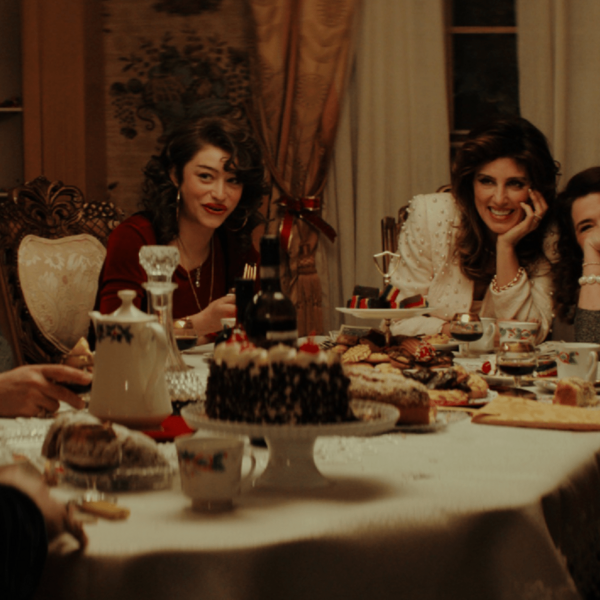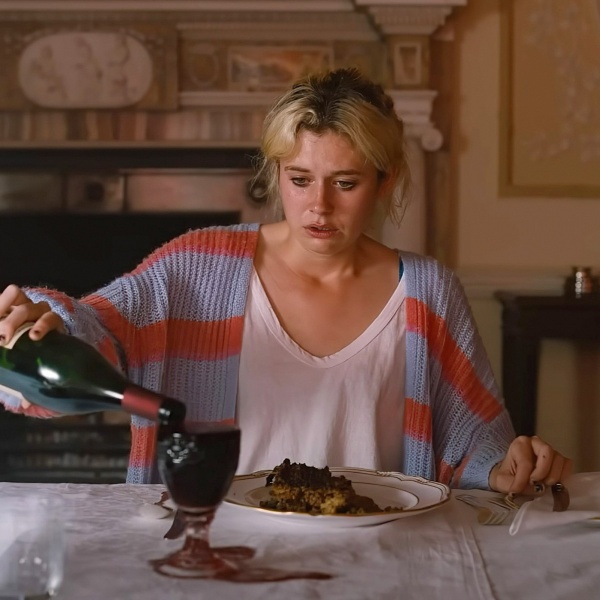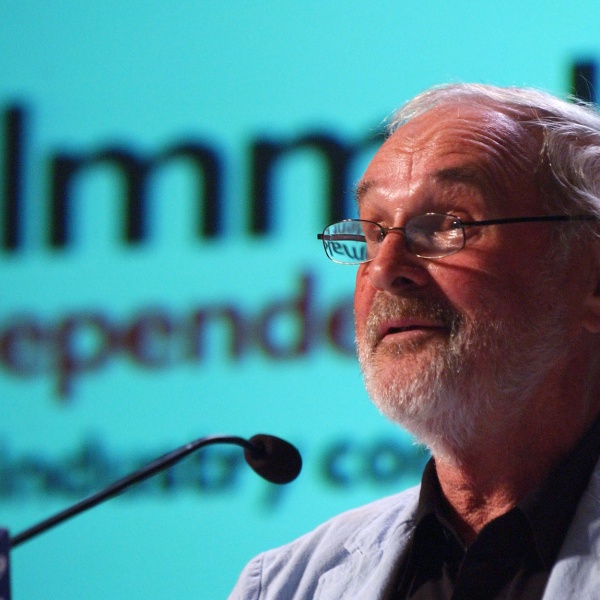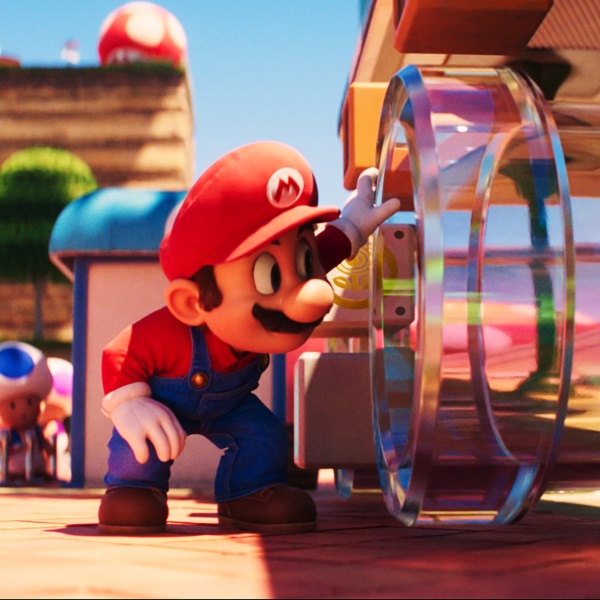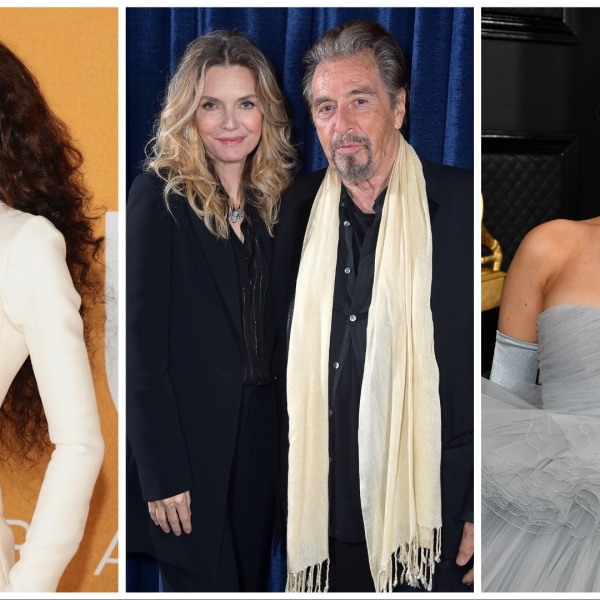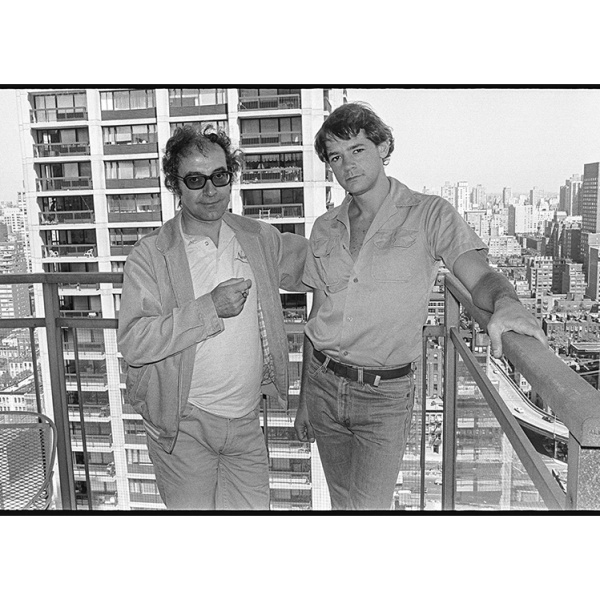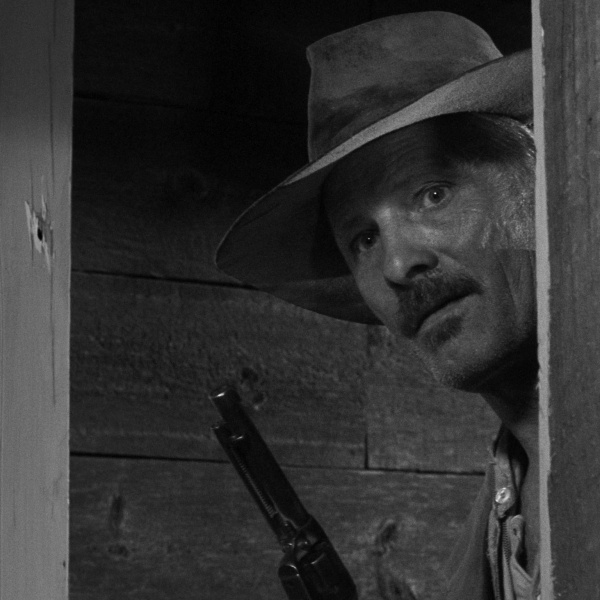There’s a reason music legend Brian Eno has never been the subject of a music documentary: He thinks they’re rubbish.
“I always find them frustrating,” said Eno, zooming into the post-screening Q&A at the January 18 premiere of “Eno,” which is, in fact, a documentary about the musician. “Any documentary I’ve ever seen about anybody I know, I thought has missed out [on] most of the interesting things about them.”
Eno’s larger problem with biography, whether it’s a movie or book, is that even the good ones “trace a sort of single chronological path through and make everything follow from each other.”
Veteran documentary director and producer Gary Hustwit shared Eno’s concerns. So this was his pitch: The documentary would be a different film every time it screened. Rather than the filmmaker making the connections between different aspects of Eno’s life, art, and ideas, digital artist Brendan Dawes would develop generative A.I. software that would randomize which parts of “Eno” appeared in each screening, and in what order.
Dawes has used generative processes involving data, machine learning, and algorithms to create his own celebrated art, which includes interactive installations, electronic objects, online experiences, data visualisations, motion graphics, and imagery for screen and print. He told the Sundance audience that according to his calculations there were 52 quintillion (that’s 52 followed by 19 zeroes) possible permutations of “Eno.”
Did Dawes’ engine ever produce a version of the film that Huswit didn’t like? The short answer is: Yes. That was true in the team’s earliest experimentations, which meant Huswit and the film’s editors, Maya Tippett and Marley McDonald, needed to strike a balance between the complete randomness of Dawes’ engine and the filmmakers’ natural instinct to control and shape the material as storytellers.
The solution lay in identifying the key scene that needed to be in every version of “Eno” and by establishing a consistent opening and ending. With that infrastructure, every iteration worked.
In many ways, “Eno” is a traditional documentary. The director conducted sit-down interviews with Eno about his career and life and gained access to the musician’s vast personal archive that included over 500 hours of video footage amassed over his six-decade career. Tippett and McDonald assembled these elements into different sequences (the filmmaking team referred to them as “modules”).
For example, the version that premiered at Sundance included sections about Eno producing U2’s early albums, his ’80s exploration of video art, collaborations with David Bowie, his philosophies on pop music, scoring the NASA documentary “For All Mankind,” Eno’s love of nature and how it relates to his work, and his groundbreaking work in ambient music. It also discusses how Eno didn’t know how to play an instrument when he began working with the first synthesizers as a member of the band Roxy Music.
However, the filmmakers extracted many more modules from Eno’s incredibly varied career and expansive philosophies about art, life, technology, and the future. Those are also available to watch, in theory, if viewers experience another of the 52 quintillion documentary variations.
An audience member who liked the film expressed frustration that the premiere version of “Eno” didn’t touch upon the Portsmouth Sinfonia (a 1970 orchestra Eno assembled from non-trained musicians). Huswit said there was a Portsmouth Sinfonia section and invited the audience member to the next day’s screening, which will be a totally different version that could include it.
“I think the most interesting thing is that every cut that you watch, there are different themes that emerge because we thought about what we were trying to say with [each of the] scenes,” said McDonald. “But seeing two scenes back to back, that you wouldn’t have thought to put back to back, creates a whole new idea and theme and gets at this larger picture.”
Those involved in the project think Eno — who utilized cutting-edge technology, including generative software, throughout his career — was the ideal subject for this formal experiment.
“I liked the idea of a film that worked the same way that my music works, which is to say with a fairly high degree of randomness in it,” said Eno. “And often a high degree of non-repetition as well.”
A clarification made during the post-screening discussion worth mentioning for those who plan to see the film at Sundance: Each of the six screenings at Sundance (including the press & industry and Salt Lake City screenings) will be completely different. However, while Dawes’ engine is capable of outputting different versions “live” in real-time, that’s what’s not happening at the festival. The team output six versions, and generated six different DCPs, ahead of the festival.


